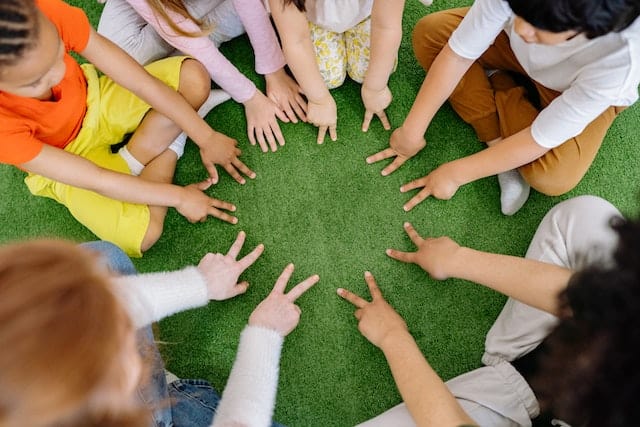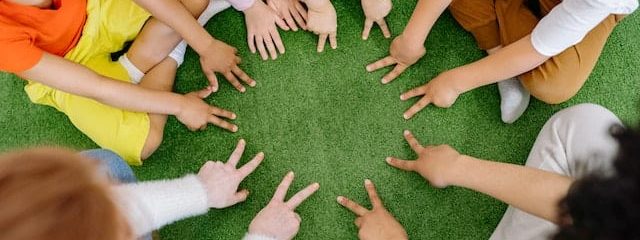As kindergarten teachers, it is our responsibility to lay a strong foundation for our students' mathematical education. Teaching numbers to our little learners is crucial as it sets the stage for further learning in math concepts.
However, introducing numbers to kindergarten students can be challenging. They might not yet grasp the concept and struggle with identifying and counting numbers.
It is imperative to use effective teaching techniques that enhance students' understanding and enthusiasm for numbers.
Therefore, in this article, we will share some helpful tips to teach numbers to kindergarten children.
We hope our insight and expertise will help make teaching numbers to kindergarten students

What is the Best Way to Teach Numbers to Kindergarten Students?
Math skill is an essential part of a child's daily life, and it is important to help young children develop their mathematical thinking. Early math skills have the greatest predictive power, followed by reading and then attention skills.
Moreover, the more math-oriented activities kids do before kindergarten, the better they will understand concepts of mathematics in school.
Therefore, to help your student have a better understanding of the basic concept of Math, here are some tips to teach kindergarten about numbers.
1. Use Visual Aids
In order to teach numbers to kindergarten students successfully, it is important to make the learning process engaging and fun. One effective strategy is to use visual aids such as counting blocks or number flash cards.
These tools allow students to physically manipulate the objects and visually see the number they are learning, making it easier for them to comprehend and retain the math concepts
For instance, kindergarten teachers can utilize counting blocks to help students learn how to count and add numbers. Additionally, number flashcards can be used to teach students how to identify numbers in written form.
By incorporating visual aids in their teaching approach, educators can create a more interactive and enjoyable learning experience for their students.
2. Teach Numbers in a Natural and Meaningful Way
Teaching numbers to kindergarten children can be both exciting and challenging. One of the best ways to make the process both natural and meaningful is by using objects they encounter in their day-to-day lives.
One example is counting objects during snack time. When children are offered snacks, make sure they are arranged in such a way that makes it easy for counting.
For instance, if there are five crackers, place the crackers in a line or circle and encourage the children to count them out loud.
This approach not only helps to build the foundation for counting but also reinforces the abstract concept of numbers, making the lesson both tangible and memorable for the children.
Additionally, asking simple math questions like “if there are five crackers and you eat two, how many crackers are left?” helps to develop their problem-solving skills and helps prepare them for more complicated mathematical concepts later on.
3. Incorporate Rhymes to Make Learning Numbers Fun and Engaging
Integrating rhymes is an effective strategy to make learning numbers an enjoyable experience for kindergarten students.
Incorporating rhythm into a math lesson can capture children's imagination, enhance their memory retention abilities, and foster a positive attitude toward learning.
By making math fun and engaging, students may be motivated to participate in the lesson and develop a profound understanding of numerical concepts.
Teachers can also easily integrate rhymes into their math lessons by creating their own jingles.
4. Provide Opportunities for the Hands-on Activity
One effective technique for teaching numbers to kindergarten students is by providing opportunities for hands-on learning through games and activities that involve counting and recognizing numbers.
This approach enables students to develop a better understanding of numerical concepts, which can allow for successful retention over time.
Incorporating fun activities such as counting games, number recognition activities, and interactive counting songs can help children to develop their counting and number recognition skills in an engaging and enjoyable way.
Additionally, activities that utilize items such as counting blocks, beans, or even fingers and toes can be useful tools in helping students understand the concepts of quantity and numerical value.
When children are enjoying themselves while learning, they are much more likely to retain what they have learned, making hands-on activities a valuable addition to any kindergarten number curriculum.
5. Encourage and Praise Your Students’ Progress
One effective way to teach numbers to kindergarten students is to encourage and praise their progress. Positive reinforcement is essential in building a child's confidence in their number skills.
Make sure to acknowledge their accomplishments and celebrate small victories, such as identifying numbers or counting objects. Use phrases like "great job" or "excellent work" to praise their efforts.
Additionally, providing constructive feedback can help students understand their strengths and areas for improvement.
Remember to keep your comments specific and encouraging, focusing on what the child did well and pointing out areas where they can improve their skills.
By doing so, you can foster a positive learning environment and inspire students to continue practicing their number skills.

Final Thoughts
Teaching numbers to kindergarten students can be a fun and engaging process with the right techniques.
By using hands-on activities, games, and visuals, teachers can spark children's curiosity and motivate them to learn numeracy skills.
The key is to make lessons interactive, age-appropriate, and relevant to their everyday experiences.
These tips can help teachers lay a strong foundation for further math learning and prepare children to become confident problem-solvers in the years to come.
Cudy helps connect tutors, students, and parents to conduct and schedule online lessons anytime and anywhere. Join Cudy and subscribe to our blog for many study tips and more!
FAQs
What is a fun way to teach numbers?
Some fun ways to teach numbers to kindergarten students include counting down from 10, using number games, and learning about the numbers in everyday objects. Additionally, it is important to foster a love of mathematics in your students by providing opportunities for hands-on experiences and puzzles.
What are Montessori number activities?
Montessori number activities are a set of teaching methods that use hands-on and concrete materials to teach children about numbers and counting. Some examples of Montessori number activities include using sandpaper numbers, numerical rods, spindle boxes, colored bead stairs, and cards and counters.
What are numeracy activities?
Numeracy activities are a set of fun and engaging activities that help children develop their numeracy skills.
What are basic math skills for kindergarten?
Kindergarten math skills include basic concepts such as number recognition, counting, addition and subtraction up to 10, shapes, sorting and classifying, measuring and also comparing.
What are skills that help develop numbers?
There are several skills that help develop numbers, including counting with understanding, identifying shapes, understanding order and patterns, and comparing sizes.






